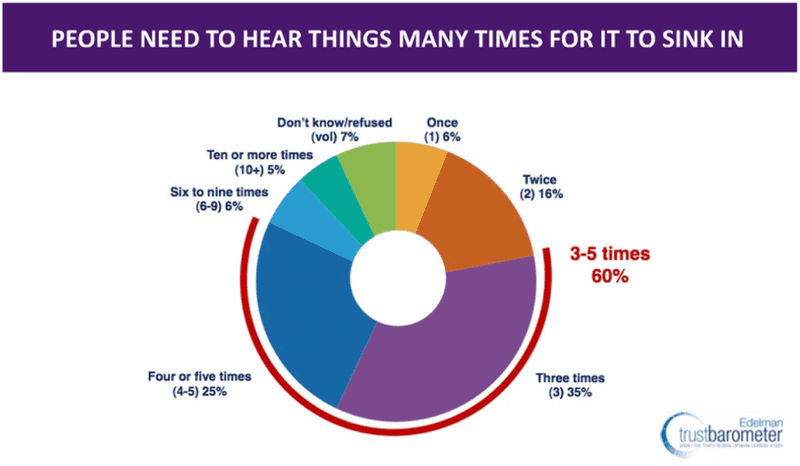How many times do you have to ask for help?
Many years ago I worked with a charity that used to recruit new supporters through display and insert advertising.
At one point they stopped advertising for about six months. When they started again, nothing worked!
Banker ads in banker publications were generating a tiny number of donors compared to what was expected.
The charity was worried.
They ran some more ads to double check the results.
Things looked a little better, so they ran some more.
Results improved again. More ads were run.
This continued until after about half a dozen insertions, results were back at expected levels.
That's because people need time to make the decision to give. Asking just once isn't enough. The time may not be right for them. They may have concerns that they need to consider.
It's something known as effective frequency. It's the number of times that someone has to see an ad before a response is generated.
I was reminded about this by a fantastic post on Social Hallucinations that shows a graph illustrating this concept.
As Daria points out, success is dependent on many factors, but the majority of people still need between three and five exposures before something sticks.
It doesn't mean that running an ad five times is going to generate a huge number of donors. People still might find your message (or the execution) irrelevant and ignore it.
But what is important to realise is that people regularly need more than one opportunity to give before they put their hand in their pocket and you shouldn't necessarily reject an idea if it fails on the first attempt.
Daria sums things up pretty well when she says…
"We [need to] create many contact points with people in spaces where they already are, where they are in the right receptive mode and context. It is not necessarily about sending out the same message but adapting the message to environment it is going to be seen in. Integrate and adapt, be always in beta to get best out of it and make sure people hear what you say by communicating smarter."
For an example of how ActionAid is doing this, take a look at this post.
Tags In
Related Posts
2 Comments
Comments are closed.
The Essentials

Crack the Code to Regular Giving: Insights, Strategies, and a Special Giveaway!

‘Tis Halloween. Keep to the light and beware the Four Fundraisers of the Apocalypse!

Why do people give? The Donor Participation Project with Louis Diez.

A guide to fundraising on the back of a postcard

What does the latest research tell us about the state of fundraising?







That’s really interesting.
I know I remember reading that people are contacted by companies, on average, around seven times before they become customers.
I can’t rememember the details of the study but it was within a B2B context, I think.
I must be special, though. I only read that once and I still remember it.
Come to think of it, maybe I’m just really gullible or naive.
PS. There’s a marketing ‘guru’ or ‘expert’ who champions this idea of lots of different messages, instead of one big message. Will try to find his name for you.
I agree Mark. Integration is key. The more a charity is out there, through many different channels, the more likely they will be top of mind with prospective donors and their own donors and the more likely they are to succeed. Good post as usual. I hadn’t seen that particular graph before but it totally makes sense.
I found the ActionAid post interesting as well.